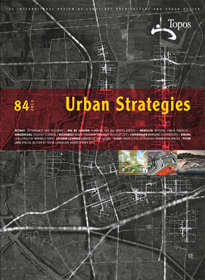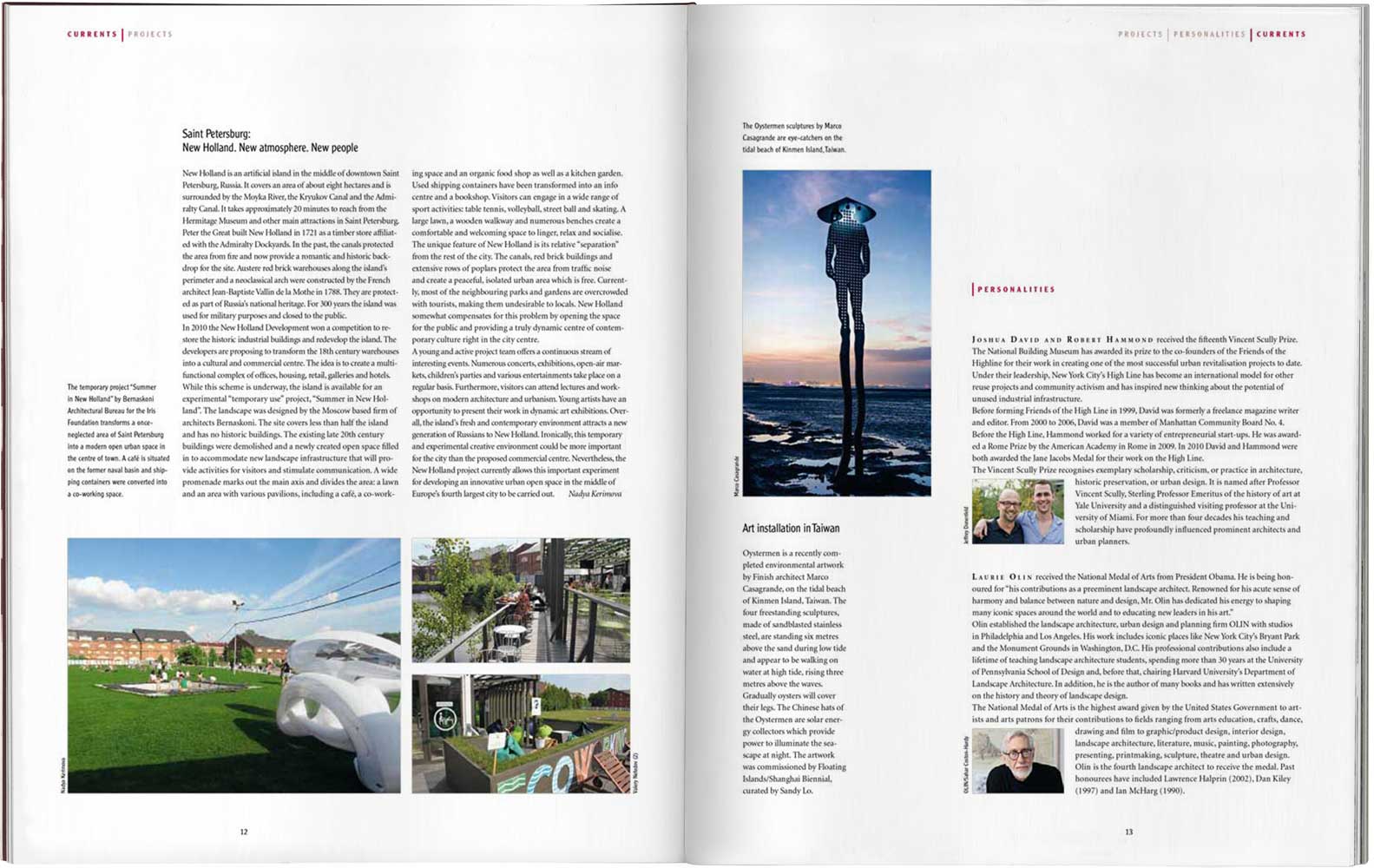
TOPOS.
New Holland is an artificial island in the middle of downtown Saint Petersburg, Russia. It covers an area of about eight hectares and is surrounded by the Moyka River, the Kryukov Canal and the Admiralty Canal. It takes approximately 20 minutes to reach from the Hermitage Museum and other main attractions in Saint Petersburg. Peter the Great built New Holland in 1721 as a timber store affiliated with the Admiralty Dockyards. In the past, the canals protected the area from fire and now provide a romantic and historic backdrop for the site. Austere red brick warehouses along the island’s perimeter and a neoclassical arch were constructed by the French architect Jean-Baptiste Vallin de la Mothe in 1788. They are protected as part of Russia’s national heritage. For 300 years the island was used for military purposes and closed to the public.
In 2010 the New Holland Development won a competition to restore the historic industrial buildings and redevelop the island. The developers are proposing to transform the 18th century warehouses into a cultural and commercial centre. The idea is to create a multifunctional complex of offices, housing, retail, galleries and hotels. While this scheme is underway, the island is available for an experimental “temporary use” project, “Summer in New Holland”. The landscape was designed by the Moscow based firm of architects Bernaskoni. The site covers less than half the island and has no historic buildings. The existing late 20th century buildings were demolished and a newly created open space filled in to accommodate new landscape infrastructure that will provide activities for visitors and stimulate communication. A wide promenade marks out the main axis and divides the area: a lawn and an area with various pavilions, including a café, a co-working space and an organic food shop as well as a kitchen garden.

Used shipping containers have been transformed into an info centre and a bookshop. Visitors can engage in a wide range of sport activities: table tennis, volleyball, street ball and skating. A large lawn, a wooden walkway and numerous benches create a comfortable and welcoming space to linger, relax and socialise. The unique feature of New Holland is its relative “separation” from the rest of the city. The canals, red brick buildings and extensive rows of poplars protect the area from traffic noise and create a peaceful, isolated urban area which is free. Currently, most of the neighbouring parks and gardens are overcrowded with tourists, making them undesirable to locals. New Holland somewhat compensates for this problem by opening the space for the public and providing a truly dynamic centre of contemporary culture right in the city centre.
A young and active project team offers a continuous stream of interesting events. Numerous concerts, exhibitions, open-air markets, children’s parties and various entertainments take place on a regular basis. Furthermore, visitors can attend lectures and workshops on modern architecture and urbanism. Young artists have an opportunity to present their work in dynamic art exhibitions. Overall, the island’s fresh and contemporary environment attracts a new generation of Russians to New Holland. Ironically, this temporary and experimental creative environment could be more important for the city than the proposed commercial centre. Nevertheless, the New Holland project currently allows this important experiment for developing an innovative urban open space in the middle of Europe’s fourth largest city to be carried out.